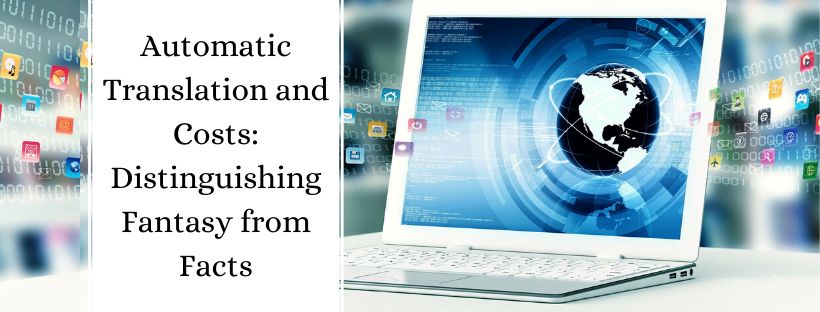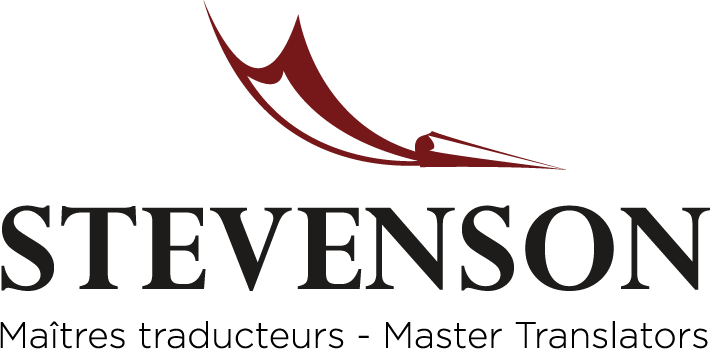
Automatic Translation and Costs: Distinguishing Fantasy from Facts
“Automatic translation” is a very controversial topic that has been all the rage in the industry. When these tools first became available, translation firms and freelancers both perceived it as the elusive dream tool that would increase their productivity and rack in unprecedented profits.
As for actual and potential clients, they hoped to eliminate the middle man, or at the very least, that the technology would drive down the rates of their translation services providers. Some translators saw this new technology as the impending doom of their profession. Now that the dream has somewhat turned into reality, it’s time to take a step back and analyze the situation. We could say that the reality lies somewhere in between, but the truth is, things turned out different than expected: automatic translation can be just as time-consuming, as the objective is not to pump out texts faster, but rather to deliver a product with higher consistency and quality. Therefore, “automatic translation” is an incorrect name.
The term now used is “computer-aided translation” (CAT). CAT is useful when it comes to repetitive texts, for example when translating technical matters. Among other things, it makes it possible to analyze the text and generate a pre-translation that provides a rough draft of the text in the target language. Translation firms and freelancers equipped with the right tools and specializing in certain fields may thus develop comprehensive term banks to feed the translation software. The work is not all chewed up and depends on internal expertise built over time practising in the field, as well as on a capacity to record, transmit, and share skills and knowledge among colleagues. Each new translation enriches the database and adds to the firm’s wealth of linguistic knowledge. Although this approach ensures consistency in the use of words and technical terms, human intervention remains nonetheless essential. Language is complex and texts are not translated simply by switching words around, and without these term banks, automatic translation is not very effective, and can even be more time-consuming.
When using a CAT software, the translator must perform a thorough comparative edit to ensure that the text reads smoothly as well as identify erroneous translations and grammar mistakes made by the software. This attention to detail requires intense focus and finesse that may only be acquired through experience. A quality-oriented translator will invest the time saved to ensure the final product is not a pale shadow of the original that sounds like a translation. The main advantage of CAT is that when a major project must be split up between several translators to ensure that in the final draft, discrepancies in style are not very noticeable. Therefore, it is not a tool intended to pump out quick translations, but rather to produce a higher quality final product by allowing the translator more time to think, research, and ensure consistency. Another constraint to keep in mind is that the human brain can only process so many words per day before losing focus.
CAT will not replace humans, as evidenced by blatant mistakes left by translators who hoped to make a quick buck by using automatic translating and quickly skimming through it without in-depth editing. A funny example that comes to mind dates a few years back: a label on a snow shovel named “Snow Pusher” had been translated to “Revendeur de drogue de neige” in French, interpreting “Pusher” as a drug dealer. This type of mistake is easily detected by translators who use the software as intended. The reason that “machines” can’t replace humans is that by nature, the machine needs clearly defined rules and a limited set of possibilities and scenarios to operate properly. The story of Google’s Alphago artificial intelligence that taught itself to beat the best human Go player is a perfect example. Although this game contains a very high number of possibilities, they are not infinite and must comply with the rules of the game. The same is not true with languages, as our imagination opens up an infinite number of possibilities.
CAT can be good news in the sense that it enables translators to invest more serious thought into their work and can contribute to enhancing the quality of the final product. However, it does not mean that translators will become obsolete or that the value of their work is reduced in any way. Like all professions, translation adapts itself to new technology and harnesses its benefits to improve. Luckily for us, human intervention remains part of the equation at some point or another in all fields of work; otherwise, what would be our purpose in this world?


Leave a Reply